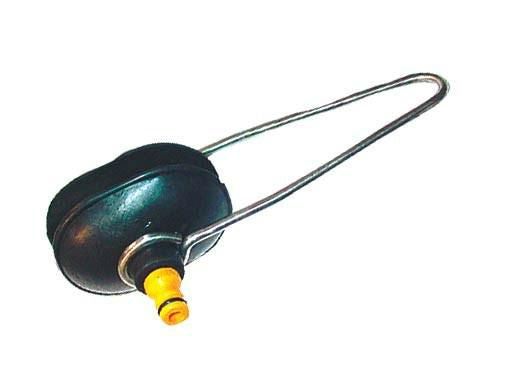
Flushing your outboard motor when you've been boating on saltwater is an incredibly important part of routine engine maintenance. Not doing this is a recipe for disaster, as a buildup of salt can block the cooling system, leading to possible overheating and it will eventually corrode your engine from the inside out.
How to flush an engine with a flushing port
Flushing happens one of two ways, depending on whether your engine has a flushing port or not. Ports of the this kind are found mostly on newer engines, manufactured in the last ten years or so. The connection points vary, so it's best to check your owner's manual for where it's located on your specific model.
Once you've established the motor has a port, and you've found it, the rest is easy:
- Connect a garden hose to the port.
- Turn on the water.
- Let the engine flush for five to ten minutes.
And that's it!
Unlike the alternative method discussed below, there's no need to turn the engine on when using a flushing port - they're designed to be used without power, making them a lot quieter and fuel-efficient.
How to flush an engine without a flushing port
If your engine is doesn't have a dedicated flushing port, you'll need to purchase a set of flushing muffs. These earmuff-looking gizmos clamp over the water intakes on the side of the gear case, providing a source of water for when you turn the engine on.
These are the steps:
- Fit the flushing muffs to the water intakes.
- Turn on the water.
- Once there's enough flow, start the engine and let it idle for two to three minutes.
- Watch the engine while it runs and don't let it rev over about 1000 rpm.
There are a couple of things to note - if your motor has additional water intake valves to the ones on the gear case, these will need to be sealed with tape to stop overheating. If your engine doesn't have water intakes on the side of the gear case at all, you'll need to find yourself a flushing bag instead.
If you're still not sure, take a look at the video below - it runs through both methods of flushing.
A few extra things to keep in mind
It's advised that you flush your engine every single time you use it in salt water. That way you can be sure that you've got everything that's left out before it has a chance to settle. You might think that you can get away with only doing it every so often, but you're taking a big risk. The worst thing would be for your boat to conk out just as you're ready for a day of boating, purely due to the fact that it overheated from lack of flushing.
There's also the question of whether it's ever necessary to do a freshwater flush. As we previously stated, the primary time you'd do an engine flush is after boating in saltwater. Yet there are still occasions when you'd want to a flush after boating in freshwater: if the lake is dirty or contaminated, or if some muck has made its way into the intake. Either way, there's no harm in doing it, so a flush every so often is a good idea.
Hunts Marine is your one stop shop for all your boating needs. We have a wide variety of accessories online and in-store, so whether you browse in the virtual world or in-person, you can be sure we've got what you need.




